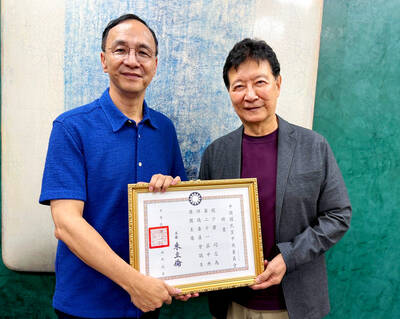When clouds start gathering and it gets dark and menacing outside, most people need to ask themselves whether it's time to shut all of the windows before the rain sets in.
If things go the way that some researchers are hoping, the windows and shades will soon close themselves automatically, just one of many parts of home living that will become more comfortable and safe.
The technology is known as "ambient intelligence," and working prototypes are currently being tested by various research teams around around the world.
The first family to live permanently in this kind of networked home are the Steiners of Switzerland's Zug canton. The Steiners have already lived through some things that have made them question the "intelligence" of their house.
An example of this came on one cold evening when the computer scientist and his teacher wife were left standing on the doorstep in front of their tightly locked front door. The biometric sensor used to open it wouldn't recognize their fingerprints.
"Our experience with these sensors comes solely from high security fields like banking," explains Beat Schertenleib, spokesman for the project FutureLife (http://www.futurelife.ch).
In those settings, things like temperature and humidity are predictable and constant. The device was not prepared for below-freezing temperatures.
The Steiner family is nevertheless quick to point out the overwhelming positives.
"It's nice to feel independent, since we can check on and control our house remotely."
One machine automatically waters the grass, another ensures that packages can be delivered even if no one is around. Access to this Skybox, as the drop box is known, is granted through an electronic key or a card with an access code, with the homeowner receiving a text message on their cellphone that a package has been delivered.
FutureLife is a Swiss project, but Germany also has its share of similar endeavors, including Duisburg's inHaus and Eindhoven's HomeLab.
In those cases, however, the houses are only lived in for trial periods. Engineer Klaus Scherer from the Fraunhofen Institute for Micro-electric Circuitry and Systems (IMS) in Duisburg, Germany, points out that some form of much of what his team is working on can already be found in normal households.
"The components and devices are already on the market," Scherer says.
This technology ranges from energy conservation technology to telephone control of household functions through the Internet, or a combination security system with networked smoke and motion detectors. "These can recognize and report fires, break-ins and medical emergencies," explains project leader Scherer.
The scientists report that researchers place an emphasis on keeping the advanced technology from getting too complex for average users.
"With `smart living,' we are finding ourselves caught between the pressures of complexity and strong tendencies to simplify," he says. This means that the inHaus no longer offers a variety of remote controls for various devices, but rather one "integrated system control." This is capable of both regulating room temperature and lowering the blinds, says Klaus Scherer.
One mass market product that is already on the market is the multimedia refrigerator from LG Electronics. It warns about impending expiration dates for foodstuffs and notices which products have been consumed.
The "coolbox" also makes the kitchen into the household's central circuit board, with other devices controlled by the fridge. The appliance can also play back music and films.
Even if smart living makes sense in theory, most of home networking in real life is currently limited to entertainment electronics.
Many of the devices from this technology branch can already communicate with one another thanks to the wireless WLAN (Wireless Local Area Network) standard. "The computer and audiovisual worlds are increasingly in step when it comes to the living room," explains Sony's Nils Seib.
The core pieces tend to come from computer technology.
"The computer is the server and archive of the home network. It plays the central role as digital shoebox for collecting everything," Seib says.
All multimedia content stored on the server are dished out through the network media receiver, a little silver box that communicates with the audiovisual devices in the house, either with or without cables.
The user makes selections through a menu on the television that shows all linked devices. Unlike many other manufacturers, Sony has elected against a so-called proprietary solution.
This means that the network media receiver can work with more than just Sony brand components. "You're completely free in terms of choosing output devices," Seib claims.
Philips is chasing a similar dream. The Dutch firm offers a slightly different twist: their devices can communicate with one another without the help of a computer as middleman.
A wireless digital media receiver that looks like a flat DVD player bridges the "media gaps." Their networked entertainment center runs absolutely wirelessly, with content streamed from the PC or Internet.
Philips has also avoided the closed-solution model. "We purposely avoided developing our own standards, since nobody buys devices from just one brand."
Much more important is user-friendliness, even for very complex devices, he says. "You need to be able to feel comfortable with the machines without being a computer expert."

Last week the story of the giant illegal crater dug in Kaohsiung’s Meinong District (美濃) emerged into the public consciousness. The site was used for sand and gravel extraction, and then filled with construction waste. Locals referred to it sardonically as the “Meinong Grand Canyon,” according to media reports, because it was 2 hectares in length and 10 meters deep. The land involved included both state-owned and local farm land. Local media said that the site had generated NT$300 million in profits, against fines of a few million and the loss of some excavators. OFFICIAL CORRUPTION? The site had been seized

Next week, candidates will officially register to run for chair of the Chinese Nationalist Party (KMT). By the end of Friday, we will know who has registered for the Oct. 18 election. The number of declared candidates has been fluctuating daily. Some candidates registering may be disqualified, so the final list may be in flux for weeks. The list of likely candidates ranges from deep blue to deeper blue to deepest blue, bordering on red (pro-Chinese Communist Party, CCP). Unless current Chairman Eric Chu (朱立倫) can be convinced to run for re-election, the party looks likely to shift towards more hardline

Sept. 15 to Sept. 21 A Bhutanese princess caught at Taoyuan Airport with 22 rhino horns — worth about NT$31 million today — might have been just another curious front-page story. But the Sept. 17, 1993 incident came at a sensitive moment. Taiwan, dubbed “Die-wan” by the British conservationist group Environmental Investigation Agency (EIA), was under international fire for being a major hub for rhino horn. Just 10 days earlier, US secretary of the interior Bruce Babbitt had recommended sanctions against Taiwan for its “failure to end its participation in rhinoceros horn trade.” Even though Taiwan had restricted imports since 1985 and enacted

Enter the Dragon 13 will bring Taiwan’s first taste of Dirty Boxing Sunday at Taipei Gymnasium, one highlight of a mixed-rules card blending new formats with traditional MMA. The undercard starts at 10:30am, with the main card beginning at 4pm. Tickets are NT$1,200. Dirty Boxing is a US-born ruleset popularized by fighters Mike Perry and Jon Jones as an alternative to boxing. The format has gained traction overseas, with its inaugural championship streamed free to millions on YouTube, Facebook and Instagram. Taiwan’s version allows punches and elbows with clinch striking, but bans kicks, knees and takedowns. The rules are stricter than the